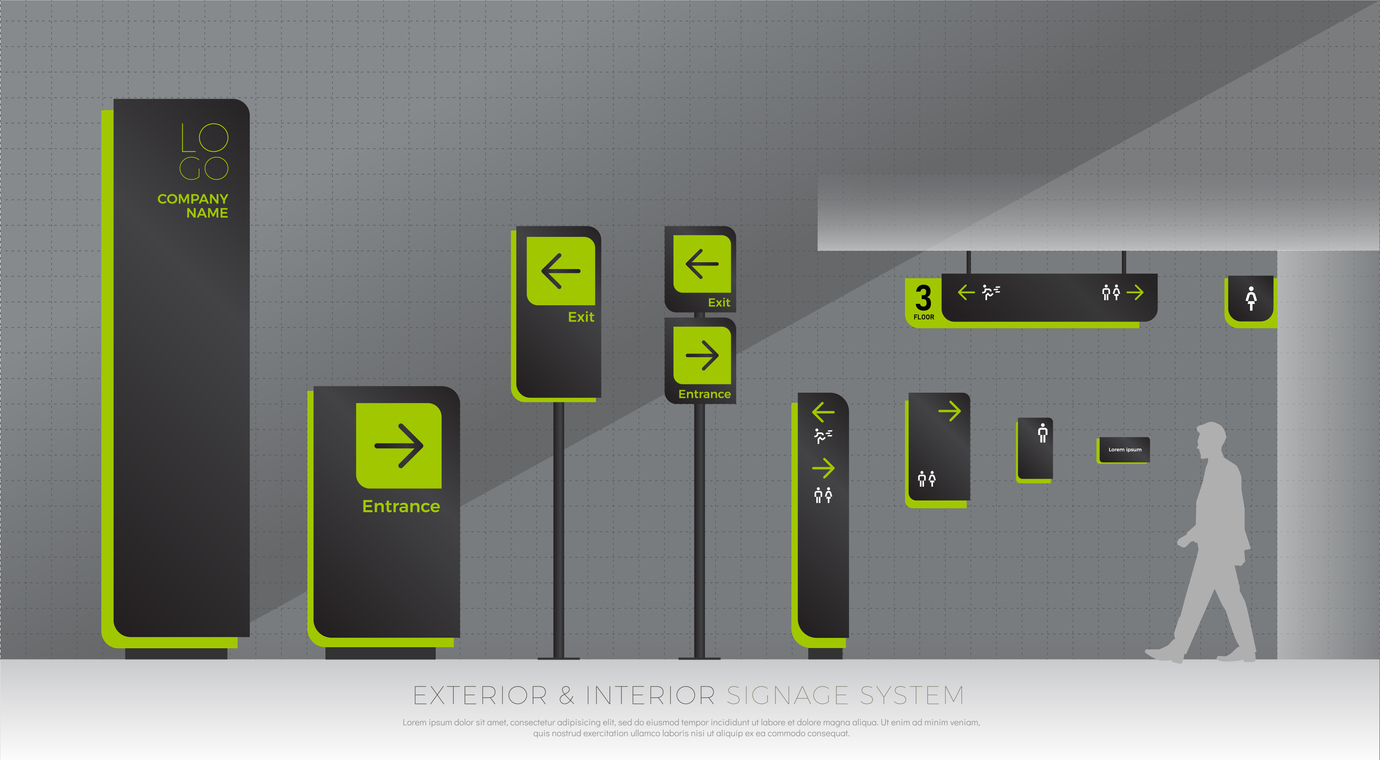Signage is a big concern for many businesses. If you’re starting a business, one of the first things you’ll need to do is create some indoor signage. Signage is critical to all that goes on inside a business, and the hole it leaves in a business’s customer experience is noticeable without it. With it, you can help customers find their way around your establishment and learn more about what you have to offer.
When designing indoor signage for your business, there are a few things to keep in mind. First, be sure to use fonts and colours that are easy to read. You also want to make sure your sign stands out from its surroundings, so choose a bright or contrasting colour. And finally, be sure to include all the necessary information, such as your company name and logo, hours of operation, and contact information. But is that advice one-size-fits-all?
What Does Indoor Business Signage Do?
Indoor signage is an important part of any business. It helps customers and employees find their way around, and it also helps to build the branding of the company. Due to that fact, it has various design options.
Most businesses use some form of indoor signage, such as brand building logos and signage systems that direct people to specific areas, called wayfinding. Directory signs can list the different departments or floors in a building, or they can list the services offered by a company. Logos are used to identify companies and to create a visual brand for them. Signs that direct people to specific areas can be very helpful in large buildings or complexes – but do these signs require different building materials to do different jobs? Signs point to yes. Indoor signage can also be used for various marketing purposes. For example, businesses can use point-of-purchase displays or posters to promote special sales as more temporary signage solutions. And mobile vinyl signs are great for tradeshows.
Wayfinding
Wayfinding signage refers to any type of signage that helps direct people in a building or outdoor space. This can include signs that point out the way to exits, restrooms, or other destinations, as well as directional arrows and other markers.
Wayfinding is especially important in large buildings or spaces where it can be difficult to intuit the location of goods and services within a building. Poorly designed wayfinding can lead to frustration and even safety hazards, so it’s important to choose a signage system that is both effective and easy to navigate.

What Design Does an Interior Sign Need?
When designing an interior sign, there are a few major questions you should begin with. What is the purpose of the sign? Will it be used to provide directions, or will it be used to advertise a product or service? What material will the sign be made out of to accomplish its function? How big should the sign be so it’s legible from where the customer or stakeholder is standing?
Interior Signage Options
When choosing interior signage, material selection is important to ensure the visibility and legibility of your message. While signs can be made from a variety of materials, including wood, metal, and paper, acrylic is often the best choice for brand-conscious indoor signage. Acrylic is a clear plastic that can be manufactured in a wide range of colours and thicknesses. It is lightweight yet durable, making it easy to install and maintain. It can also be backlit for a stunning indoor illumination effect, a bit like the storefront’s channel letter signs.
Illuminated Signs
Neon signs are another popular option for interior signage. Neon tubing can be bent into virtually any shape, making it very versatile for creating eye-catching displays. LED illuminated signs are also becoming increasingly popular as they offer a bright, even light source that uses less energy than traditional incandescent bulbs.
Neon Vs LEDs
Neon signs work by heating a gas, which then glows. A neon sign is basically an electric lamp, but instead of high resistance copper as in incandescent bulbs, the gas itself is the conductor. A small current of electricity is passed through a glass tube filled with neon or another noble gas for a specific colour effect. The gas doesn’t consume energy, so when the current is turned on, it emits excess energy as light.
Neon signs are often mistaken for LED signs, but they are very different. LED signs use light-emitting diodes with high efficiency. They are much thinner than neon signs and use less power, so they last longer. Many sign companies end up replacing neon lights with LED tracks.
Interior Signage Recommendations
When it comes to choosing interior signs over any other signs, whether neon, backlit LED, acrylic push-throughs or a simple vinyl 2D sign, it all depends on what you’re trying to accomplish. Is it wayfinding? No need to go all-in on fancy neon signs. That might be better for brands with a nostalgic brand identity. Are you trying to impress new clients at a reception desk inside a mall? Then a 3D acrylic push-through with LED backlighting might be preferable. Your local sign company can help you navigate this difficult process and shed light on what you might need.
